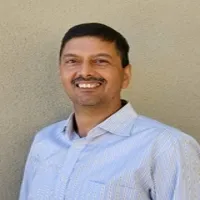11 Unconventional Leadership Development Approaches That Transform Struggling Executive Teams
This article explores eleven proven yet unconventional approaches to transform struggling executive teams, backed by insights from leadership development experts. From personal story sessions that build vulnerability-based trust to somatic regulation techniques that enhance strategic planning, these methods challenge traditional leadership development paradigms. Each approach offers practical strategies for breaking down silos, fostering collaboration, and creating sustainable leadership growth within organizations.
Personal Story Sessions Build Trust Through Vulnerability
One unconventional approach I tried was replacing our usual performance review sessions with "story sessions." Instead of talking about KPIs or quarterly goals, each executive had to share a personal story about a recent challenge, something that genuinely tested their leadership, even outside of work. It completely shifted the room's energy. People dropped their guard, started relating to each other on a human level, and we uncovered patterns about how we handled stress, conflict, and communication.
We didn't measure it with numbers right away. The real proof came from how the team started behaving afterward. Fewer misunderstandings, more direct but respectful conversations, and faster decision-making. You could feel the trust level rise. For me, that kind of cultural shift said more than any metric ever could.

Pre-mortems Break Silos With Strategic Pessimism
We successfully transformed a siloed executive team using strategic pessimism, an unconventional approach we call the "pre-mortem." Instead of planning for success, the team gathered to discuss why our next major project had already failed spectacularly. This exercise forced leaders to abandon their functional silos and candidly point out flaws and hidden risks in other departments. Beyond tracking project success, we measured its effectiveness using a **"Proactivity Ratio,"** which tracks the team's ability to foresee and mitigate strategic risks before they escalate to actual problems, as logged in our quarterly retrospectives.

Reverse Mentoring Creates Two-Way Leadership Growth
One of the most unconventional but transformative leadership development approaches I implemented was something we called "reverse mentoring in motion." Instead of traditional workshops or executive coaching, we paired senior leaders with rising mid-level talent — but not for mentoring in the usual sense. The twist was that the younger employees were the mentors, tasked with exposing leaders to emerging market trends, new tech tools, and unfiltered feedback from the front lines.
At first, it felt uncomfortable — some executives resisted the idea of "being taught" by their own teams. But that discomfort was the point. It broke hierarchy walls, sparked curiosity, and created a two-way exchange of learning that no formal training could replicate. Over time, those sessions became less about knowledge transfer and more about empathy building. Leaders started asking better questions, listening differently, and adjusting their management styles to meet the evolving expectations of a new generation of employees.
We didn't measure success through standard KPIs like performance ratings or retention rates. Instead, we tracked behavioral indicators: how often senior leaders sought feedback, how decisions were communicated, and whether collaboration scores improved in engagement surveys. Within six months, we saw a noticeable cultural shift — meetings became more inclusive, cross-team initiatives picked up momentum, and employee satisfaction around leadership communication rose sharply.
The biggest takeaway was that leadership growth doesn't always come from teaching — it often comes from unlearning. By flipping the mentor-mentee dynamic, we reminded our executives that great leadership isn't about knowing more; it's about staying open enough to keep learning.
Leading Through Presence Without Formal Authority
One of my most transformative leadership development experiences involved guiding a C-suite client who wasn't officially leading her team - yet stepped into that role through her presence and influence. The executive team she was part of was struggling with internal friction and clashing perspectives around the strategic direction of a major project. Traditional problem-solving approaches like data analysis and decision trees had all failed to break the deadlock.
Instead of relying on authority or structure, I coached her to lead from within using Conversational Intelligence(r) (C-IQ) and her unique leadership presence. Together, we focused on building trust and harmony within the team so that true dialogue could replace debate. She consciously shifted the tone of discussions, asking questions that invited exploration rather than defensiveness, acknowledging differing viewpoints without judgment, and setting the emotional temperature of the room through calm confidence.
What made this approach unconventional was that it wasn't about assigning roles or imposing decisions. It was about creating a field of mutual respect and curiosity where every voice could contribute meaningfully. Through consistent modeling of grounded communication and emotional regulation, my client became a harmonizing force - someone who transformed tension into collaboration, even without formal authority. She simply decided to rise to the occasion and used her own enthusiasm and commitment to contribute to a solution.
Effectiveness was measured not by KPIs, but by human indicators: reduced meeting tension, quicker alignment, and higher-quality strategic discussions. The team began to reach consensus on complex issues faster, and informal feedback from peers highlighted a noticeable rise in trust and cohesion. Within weeks, communication dynamics shifted from competitive to cooperative - and the project, once stalled, moved forward with shared ownership. My client's approach didn't just resolve a temporary challenge. It had a long-term effect on the team.
This experience reaffirmed that leadership development is not only about tools and structures, but about deep human connection and conversational mastery. When executives learn to lead from presence, they don't just handle situations - they transform teams.

Technical Mastery Drives Authentic Leadership Development
One unconventional leadership development approach I implemented came from a critical business challenge: our company was losing revenue due to a shortage of bespoke software connectors—components essential for integrating customer systems. To address this, I was hired to establish a wholly owned subsidiary in India focused on building these connectors from the ground up.
Rather than follow the typical playbook of hiring a full team and delegating technical execution, I took a hands-on approach. I personally learned the technology stack and built the first connector myself. This not only demonstrated feasibility but also deepened my understanding of the complexity involved, allowing me to make smarter hiring and design decisions.
Next, I recruited experienced senior engineers—people who could not only deliver but also lead. Together, we built a structured training program that empowered them to mentor and upskill new hires. This peer-led development model created a powerful internal learning culture and accelerated capability building.
Beyond the technical results—over 200 connectors delivered, $1.4 million in added revenue, and a 90% pre-sales conversion rate—I focused heavily on developing soft skills within the team. I coached senior members on communication, collaboration, and mentoring, helping them evolve into effective leaders. Together, we designed a 90-day ramp-up program for new hires that combined technical onboarding with cultural integration, ensuring each new team member became fully productive within that timeframe.
This emphasis on both technical and interpersonal growth transformed the subsidiary into a strategic asset for the company. It not only met immediate business goals but also created a self-sustaining leadership pipeline and a culture of continuous development that continues to deliver value.

Radical Transparency Transforms Feedback Into Growth
I implemented a radical transparency approach to our 360-degree feedback process by having senior managers sign their comments, both positive and negative. This created a culture where team members felt psychologically safe to openly discuss feedback context and generate innovative solutions to challenges we were facing. To complement this, we established two separate feedback systems - one purely for developmental purposes and another for evaluative decisions like promotions and compensation. The impact extended beyond typical engagement metrics, with our team seeing peer feedback participation increase by over 30% quarter-over-quarter. Most importantly, the quality of discussions between team members improved substantially, leading to more collaborative problem-solving and better execution of strategic initiatives. The real breakthrough was watching previously guarded conversations transform into authentic dialogues focused on growth rather than defensiveness.

Face Reading Restores Trust Among Executives
I was brought in to work with an executive team that had lost trust. They were full of talent, but there was a lot of friction. I introduced face reading to reveal each leader's true strengths and blind spots. This approach stripped away roles and politics, and suddenly, they saw each other as people again. They focused on each other without judgment and reconnected. Understanding how their individual energies interacted changed the whole dynamic. The turning point came during a crisis. While others froze, they moved as one. They didn't just hold steady; they became the industry winner that year. I call that measurable impact: clarity, speed, and unity when it matters most.

Department Rotation Breaks Down Organizational Silos
One unconventional approach I've used in my game manufacture is rotating leaders into departments they weren't originally comfortable with. For example, having a logistics lead spend time in client communications. It wasn't about testing them, but about giving them perspective. The effectiveness showed up in better collaboration and fewer silos, not just in KPIs.
Environmental Immersion Sparks Cross-Functional Collaboration
One of the more unconventional approaches I've taken was to remove the executive team from their usual boardroom setting and immerse them in an environment where sustainability, tech, and recycling weren't just buzzwords but operating realities. I wanted them to feel what it's like to work within constraints and think differently about value creation. Instead of pushing standard leadership models, I asked them to lead through designing solutions that addressed real-world problems in circular systems. It wasn't about a classroom exercise. It was about shifting how they connected ideas across markets that often move faster than any single leader can track.
We measured success not by revenue spikes or cost cuts but by observing how they began to collaborate and make decisions under pressure. Within weeks, they weren't defaulting to siloed thinking. They were pushing harder on cross-functional projects, making sharper calls in negotiations, and aligning strategies that accounted for long-term impact. What really told me it worked was the speed at which they started anticipating change rather than reacting to it. That level of adaptability, especially in turbulent markets, has been a far stronger measure of effectiveness than any quarterly metric could capture.

Frontline Teaching Builds Executive Humility
What changed how our leadership team worked together was having every executive lead provide short, hands-on training sessions for frontline staff. It forced leaders to simplify complex ideas, listen to feedback, and see firsthand how their decisions affected day-to-day operations. That kind of teaching built humility and sharpened communication far more effectively than any off-site retreat.
We measured its impact by tracking employee engagement and retention afterward, but what really stood out was the cultural shift. Leaders became more approachable, and team members were quicker to share ideas or flag issues early. When people trust that leadership understands their reality, accountability and problem-solving improve across the board—and that's something no spreadsheet can fully capture.

Somatic Regulation Precedes Strategic Planning
One unconventional leadership development approach I've used with struggling executive teams is starting with nervous system regulation before strategy. Instead of diving into performance goals or communication frameworks, I guide leaders through somatic practices that help them recognize when they're in fight-or-flight and learn to reset in the moment. The shift is immediate: meetings become calmer, conflicts resolve faster, and people actually hear one another.
Effectiveness wasn't measured by KPIs alone but by behavioral changes we could observe fewer interruptions in meetings, clearer decision-making, and improved retention in the weeks that followed. The real marker of success was hearing team members say, 'I feel safer speaking up now.' That's when you know transformation is happening.




